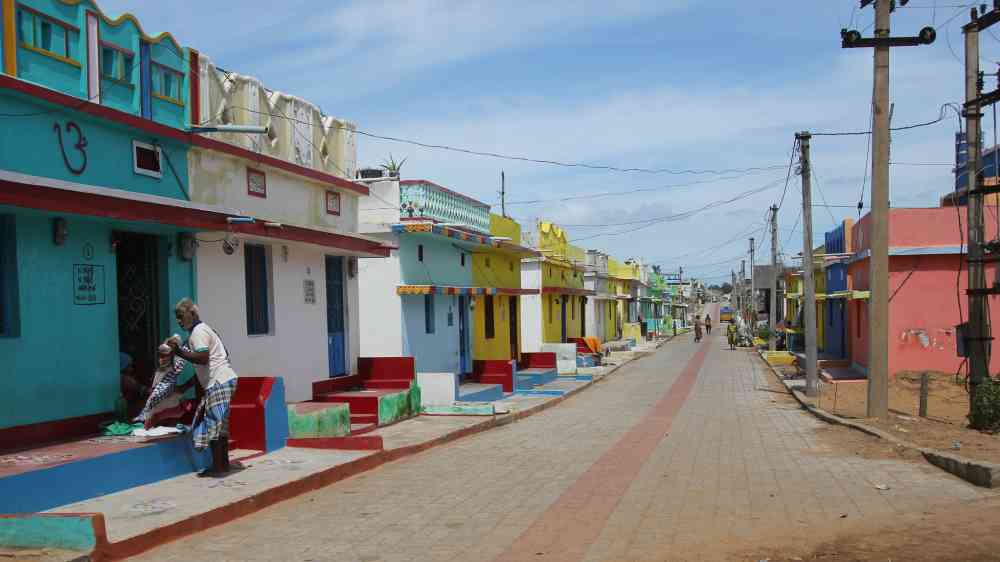India’s pathways to adaptation and resilience

In 2021 India witnessed multiple intense cascading risk scenarios.
Amid the second wave of COVID-19, triggered by the Delta variant, five cyclonic storms hit the Bay of Bengal and the Arabian sea – Cyclone Tauktae, Yaas, Gulaab, Shaheen and Jawad. Erratic monsoons left a trail of devastating major floods across Tamil Nadu, Maharashtra, Kerala, Bihar, Uttarakhand, Uttar Pradesh and Assam.
The year has unfolded to expose the challenges of a riskier world. However, it is also an opportunity to chart out India’s adaptation and resilience pathways – as well as their economic implications.
Tracking poverty, SDG progress and climate vulnerability
Poverty, according to India’s National Multidimensional Poverty Index (MPI) baseline report, is the deprivation of crucial and basic parameters of health, education and living standards. Published in November 2021, the report lists Bihar, Jharkhand and Uttar Pradesh as the states with the highest population of multi-dimensional poor.
NITI Aayog (the National Institution for Transforming India) released its third edition of the SDG India Index and Dashboard 2020–21: Partnerships in the Decade of Action in June, tracking progress across 115 indicators for 16 out of the 17 sustainable development goals. Lowest ranking states were Bihar, Jharkhand, Assam, Arunachal Pradesh, Meghalaya, Rajasthan and Uttar Pradesh.
In April the Department of Science and Technology released a detailed assessment report of climate vulnerability across India. The most vulnerable states and districts, assessed according to their current climate risk and key drivers of vulnerability, are Jharkhand, Mizoram, Orissa, Chhattisgarh, Assam, Bihar, Arunachal Pradesh, and West Bengal. The study also captures district-level vulnerabilities, identifying over 60% of the districts in Assam, Bihar and Jharkhand as highly vulnerable.
Looking at these reports together, it is clear that states with higher climate vulnerabilities are also multi-dimensionally poor and feature at the bottom of SDG matrix pyramid. Managing these interlinked risks is key to building a resilient future.
The costs of India’s climate risk and adaptation
The UNESCAP Risk and Resilience Portal estimates India’s annualized average loss (AAL) from slow-onset hazards, extreme events and biological hazards at $93 billion – or 3.35 per cent of GDP.
Drought contributes more than 70 per cent to India’s riskscape followed by floods, cyclone and earthquake/tsunami. The AAL increases to $132 billion (4.75 per cent of India GDP) and $224 billion (8.84 per cent of India GDP) under the moderate and worst climate change scenarios (representative concentration pathways 4.5 and 8.5).
The portal also estimates total climate adaptation costs for cascading hazards in India (natural and biological) under an extreme climate change scenario at US$ 43.3 billion (1.6 per cent of India’s GDP). This means that an investment of US$1 in adaptation contributes to a reduction in AAL by US$5.5.
Adaptation priorities and key policy actions
To address its unique riskscape, India should prioritize making new infrastructure resilient, strengthening early-warning systems, making water resource management resilient and improving dryland agriculture crop production, followed by protecting mangroves in the East and West coasts of India. More granular risk analysis and profiles can help target appropriate adaption action locally.
Two successful ongoing national programmes are especially significant:
One, the Mahatma Gandhi National Employment Guarantee Act (MNREGA), with an annual budget of $13 billion (2020), addresses all the adaptation priorities substantially. Two-thirds of its budget goes into natural resources management, water management, drought-proofing, and building grey and green infrastructure (including nature-based solutions). It helps build community resilience through natural resource management, inclusion, and livelihood security for poor and marginalized people. India’s efforts in strengthening multi-hazard early-warning systems continue to address unmet needs of the most vulnerable in climate risk hotspots.
Two, India has launched an ambitious $1.3 trillion plan to develop integrated infrastructure for the next 25 years. Popularly known as the ‘Prime Minister Gati Shakti Plan’ (the power of speed plan), this scheme essentially promotes next-generation infrastructure. Assuming that the cost of resilience is in the range of 5 to 10 per cent of the cost of building infrastructure, it will be a significant investment in India’s resilient future. India’s leadership in the Coalition for Disaster Resilient Infrastructure (CDRI) is an effort that addresses the multifaceted issues posed by vulnerability of infrastructure systems globally.
Coherent policies to integrate DRR
The National Policy on Disaster Management (2009) and the National Disaster Management Plan (2016) focus on disaster resilience and integrating both the Sendai Framework for Disaster Risk Reduction and the SDGs. The 2016 National Disaster Management Plan was revised in 2019 to incorporate a comprehensive action plan for ‘Biological and Public Health Emergencies’ – with actions at national and state levels. Following the recommendations of the XV Finance Commission report, India has dedicated resources for the entire cycle of disaster mitigation, preparedness, relief and rescue, as well as recovery and reconstruction.
The National Action Plan on Climate Change (NAPCC)and the State Action Plans for Climate Change (SAPCC) focus on climate adaptation programmes. These Climate Change Action Plans and the Nation Disaster Management Plan strengthen India’s position in major global initiatives: the Voluntary National Review of the SDG progress, the Nationally Determined Contributions under the Paris Climate Change Agreement, and the Sendai Framework targets. Such policy coherence is a key determinant of India’s adaptation and resilience pathways in a riskier world.
Santosh Kumar is a professor at the National Institute of Disaster Management, Ministry of Home Affairs, Government of India.
Sapna Dubey is a consultant for the United Nations Economic and Social Commission for Asia and the Pacific.
Sanjay Srivastava is Chief for Disaster Risk Reduction at the United Nations Economic and Social Commission for Asia and the Pacific.
Editors' recommendations
- Why India's budget push to infrastructure should consider climate resilience
- India’s policymakers get detailed data to help manage disasters
- Satellite and on-the-ground data help monitor groundwater in India
- Making Indian cities climate and water resilient
- Climate hazards and vulnerability atlas of India